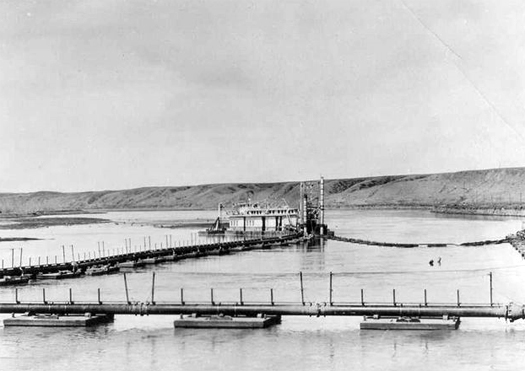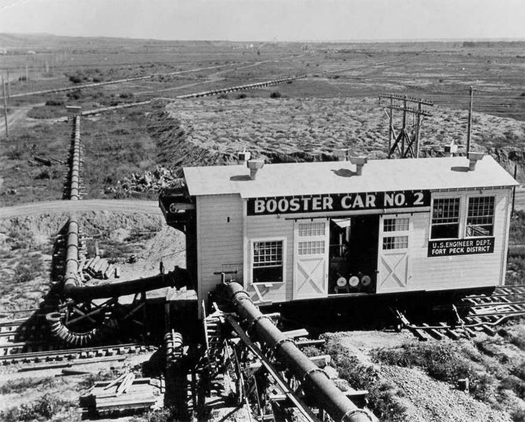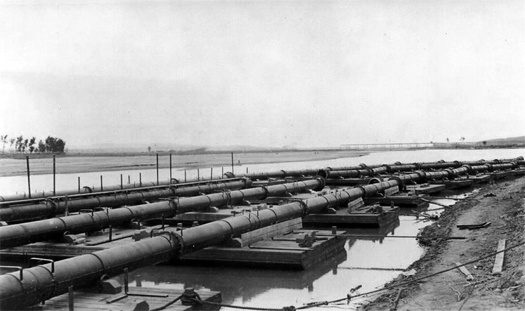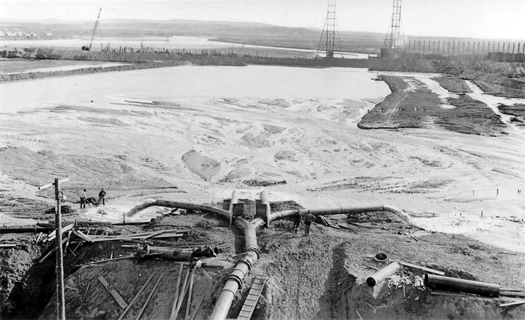
[A dredger at work in one of Fort Peck Dam’s borrow pits; photographer unknown. (Fort Peck, you will recall, was the first of the six major dams on the Missouri to be built.) The dredgers, pontoon boats, and booster barges used in the pumping of fill material from upstream borrow pits to the Fort Peck dam site were all built on site, resulting in the rather odd situation of shipbuilders from around the country flocking to work in landlocked Montana’s largest shipyard.]

[The dredgers and other vessels all required winter refuge, as dredging and the placement of fill material halted for the season; photograph by Coles-Hight Aero Photo.]

[“Boosters” (essentially, pumps) were required to keep the liquid slurry of fill material moving from dredges to the dam site; here, a “land booster” is seen under construction; photographed by Lloyd Hanson, March 1935.]

[Another land booster, here in operation, with a long length of the 28-inch diameter pipe running off towards the horizon. The borrow pits were located upstream from the dam site, in order that the excavation would add to the future capacity of the reservoir, and had to excavate soils with specific geotechnical qualities, “mostly of sand and water, with just enough clay and silt to form an impervious core in the middle of the fill”. Photographer unknown.]

[For much of their length, the pipelines floated on pontoon barges, strings of which can be seen floating in the overwintering aerial above; photographed by Lloyd Hansen.]

[Dredge material being spilled out at the base of the dam, photographed by Lloyd Hansen in March, 1934. At this point, the dam was still six years (and one major accident) from completion. The fill was dumped just inside the beginning of the slopes of the dam (marked in this aerial photograph), where is spilled into the “core pool”, a still body of water which was maintained to settle out the finest fill, which then formed the impervious core of the dam. In the background, steel cutoff sheeting — 34 million pounds, in eventual total — was being driven into the earth, where it connected the impervious core of the dam to the shale bedrock below, creating a subterranean barrier against the movement of water beneath the earthen dam.]
[All images in this post are via fortpeckdam.com.]


[…] Mammoth has been doing a summer long, series of posts on floods (both national; international) and flood control (man-made;natural responses) explored through the lens of the infrastructural landscape. All of the posts are excellent and thought-provoking but I wanted to respond to two in particular: six dams and six reservoirs and dredging fort peck. […]